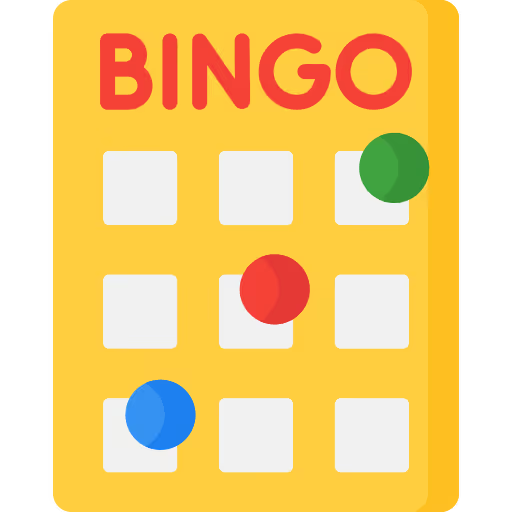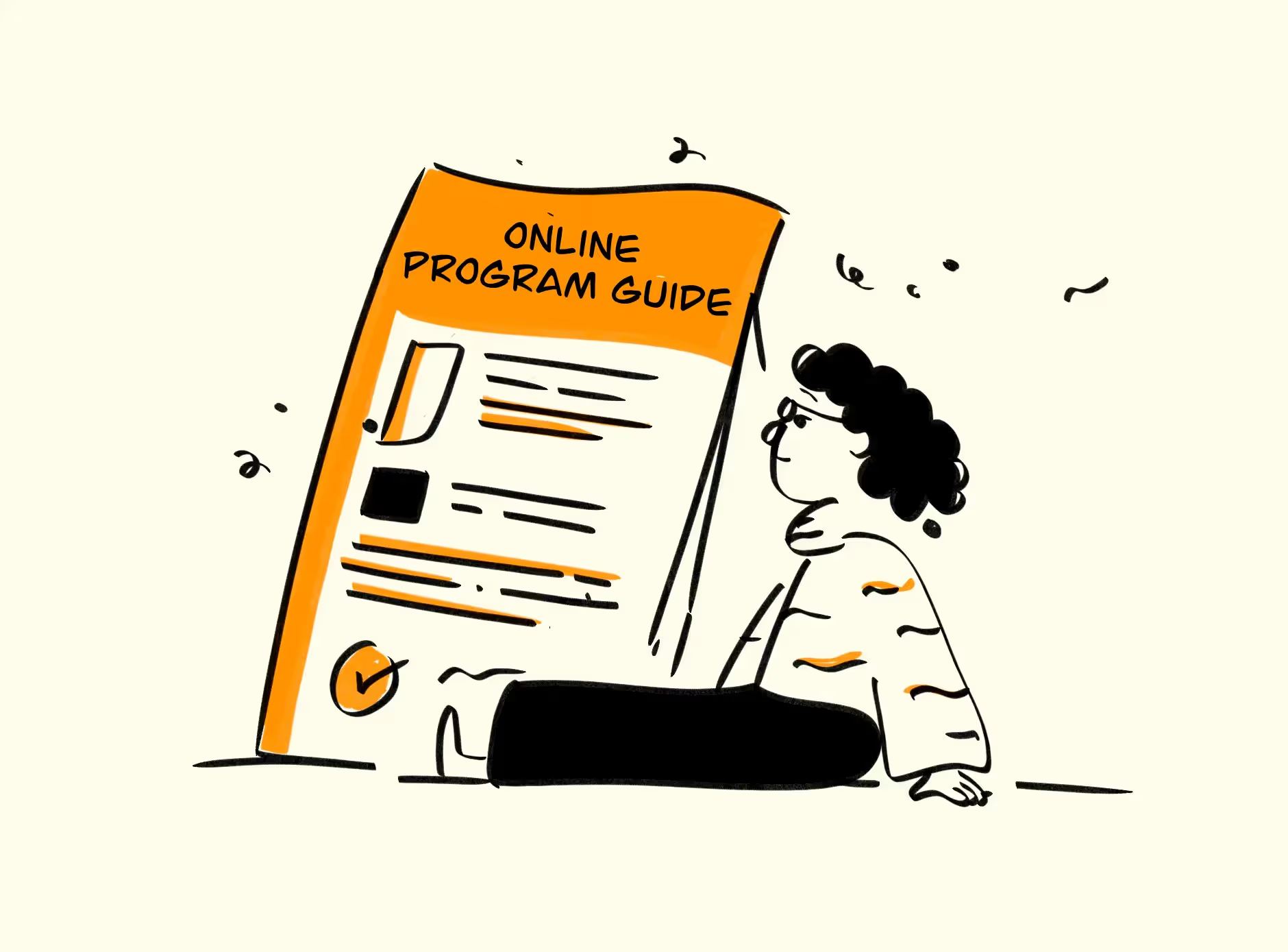




Key Takeaways
- Icebreakers Build Connections: Virtual icebreakers create a comfortable environment, helping students interact and engage with each other, especially in the first moments of class.
- Foster Collaboration: Use creative activities like trivia, Mad Libs, and digital scavenger hunts to promote teamwork and encourage communication.
- Enhance Learning with Fun: Incorporating icebreakers throughout the course helps students stay motivated, builds rapport, and makes learning more enjoyable.
Are you a teacher looking to connect with your students? Are you in a teaching position and thinking about reaching out to your students?
Or maybe you run an educational company and need some icebreakers for your virtual classroom?
I’ve included a list of 20+ effective virtual classroom icebreakers.
Virtual classroom icebreakers should be simple yet captivating.
If you’ve taken a virtual course, it can be a little tricky to get the conversation started. This is understandable because there are many unknown people in your virtual classroom.
If you’ve had experience with virtual classrooms, you’re likely aware of this and what can be done to overcome this problem.Teaching online means you don’t see your students face to face.
Chatting online means you don’t get to see each other’s reactions. This is why icebreakers are critical for successful remote courses.
Why are Icebreakers Important during Online Learning?
Icebreakers are an essential part of online education. They help students to feel comfortable and get to know each other, which is necessary for learning.Icebreakers are great for students to develop social skills and practice public speaking. They can also be used for opening the lesson, closing the lesson, or as a transition between activities.
Icebreakers can be used in many ways during online learning. For example, they can be used to introduce yourself or for students to share what they already know about the subject.
Icebreakers are a great way to get students talking to each other and get them talking with you. This is important because students often will be shy or nervous about communicating with their professors (especially if they’ve never taken an online class before).
Learning a new skill can be a daunting task, especially if you’ve never done it before. The best way to learn is by doing. But how do we get started with something we have never done before?
Learning new skills is easier when we are with others going through the same process. This is why icebreakers are so important in online learning. In fact, they make our learning experience more effective and enjoyable. Another benefit of an icebreaker is that it helps the professor know their students better. Sometimes a student may join your class with some medical condition or other life events that have made them unable to attend class on time every week.

An icebreaker will allow you to find out why they were absent and if there is anything you can do to help them out during this difficult time. By getting to know your students better, you will also better understand where they are coming from and how they learn best. This will help you tailor your lessons accordingly and ensure everyone stays engaged throughout the course!
What are the Best Times to use Icebreakers in a Virtual Class?
Icebreakers are designed to get people talking and interacting with one another. They can be used as an introduction to a lesson or as part of a short activity during a break between classes. One solution is to use icebreakers in your virtual classroom.
The best times to use icebreakers are:
At the beginning of a class - The first few minutes, of course, are essential for students to feel comfortable and excited about what they are learning. This is also a great time to remind students what they expect from them as a student in your online course.
After an assignment or quiz - Often, students struggle with motivation after completing an assessment. Use this opportunity to reinforce positive behaviours and encourage students to keep trying! It also allows you to help them understand why you assigned an evaluation in the first place (for example, if it was for practice).
When you’re introducing a new topic or skillset - If you’re teaching something new, it’s always helpful for students to have an opportunity to practice before moving on to the next section of content. Icebreakers can be used during these times as well!
Now that we've explored the importance and benefits of icebreakers, let's look at…
20+ Virtual Icebreakers for Students During a Virtual Classroom
1. Virtual Classroom Tour
A great way to get your students chatting is by giving them a virtual tour of their classroom and the resources they have access to. You can use this activity to get students familiar with how their virtual classroom works and what they can do in it!
2. Breakout Rooms
The breakout rooms are often used for small groups or one-on-one conversations with students. The best part about using breakout rooms is that you can use them as needed without worrying about taking over another student’s screen time. Students also love using breakout rooms because they don’t have to share their screens with other students.
3. Mad Libs
Mad Libs are a fun way for students to interact with each other during a virtual class session.
For example, let’s say you’re teaching about different types of poetry: Haiku? Free Verse? Sonnet? You’ll need some templates so everyone looks at the same thing at once (a Google Doc works well here). Then you’ll need each student’s name so that the Mad Libs can be personalized for each person.
Once the Mad Libs are ready, the activity can begin! Instructors should read off the first word or phrase in the Mad Libs template and encourage students to fill in their answers quickly. If there is a time at the end of class, ask students to share their stories!
4. Confession
Start by asking your students to tell a secret about themselves. For example: “If you could tell me one thing about yourself that no one else knows, what would it be?” If you have more than one student per video conference call, ask each student to share their secret with the group. Then, ask them how they feel now that their secret has been revealed.
5. Pop Culture Quiz
This one is super easy and can be used during class! Put up some photos or videos on your screen and ask questions based on what you show them.
For example, if you put up an image of Harry Potter, ask questions about him like “What year was Harry Potter born?” or “How many books have been published so far?” Students will be able to answer these questions because they have seen them in movies or read the books themselves.

6. Name Game
This simple game allows students to get to know one another better. Choose a category such as names of pets or favourite foods, then ask each student what they ate for breakfast this morning or what pet they had growing up.
7. If I was an Animal
Ask students what kind of animal they would like to be and why? You can narrow this down by asking them if they would like to be an animal that lives in the ocean, on land or in the sky. The answers you receive will give you insight into your students’ personalities and interests.
8. Two Truths and a Lie
In this game, students say two things about themselves and one lie. The rest of the group tries to guess which one is the lie. This is an excellent way for students to get to know each other and for teachers to get some information about their students!
9. Digital Scavenger Hunt
Scavenger Hunt is one of my favourite ways to break the ice in my virtual classroom because it gets everyone laughing right away!
You can give your students a list of items they need to find online and collect proof that they found them (like a celebrity’s baby picture or an article). Then they have five minutes to find as many things as possible! It’s hilarious when people try to find things like “dinosaur fact” or “funny cat video” because those tend not to exist... but it always gets everyone laughing!
10. Baby Photos
Everyone loves babies. Ask students to share a photo of their baby with the class. Have them describe what they were doing when the picture was taken, their child’s name, or something else about them. It’s a conversation starter for sure!
11. Movie Lines Icebreaker
Have students share movie lines they like or have ever said in real life. For example: “You complete me.” This can be a fun way to get students talking outside of their comfort zones and introduce them to new movies they may not have seen yet.
12. Fictional Character Icebreaker
Ask students which fictional character they would like to be for one day if given a choice between any fictional character in history. This is an excellent way for students to talk about their favourite characters and the qualities they admire about them and get excited about different types of literature!
13. Create Funny Faces!
Use an app like Zoom to show your face. Ask your students to make funny faces simultaneously and then share the video with the class. This will help them get to know each other better and have fun simultaneously!

14. Let’s Dance!
Try dancing along with a song from YouTube. If this is too much for people, try dancing with just your hands instead of your whole body – it still counts as dancing! You might want to choose something that isn’t too distracting so everyone can easily hear themselves talk.
15. Favourite Food or Drink?
Another popular option is asking each student what their favourite food or drink is. Once again, this gives you an idea of who your students are outside of school and might reveal something about them that they wouldn’t usually tell someone else right away (such as their love for chocolate milk). You could also ask them their least favourite food item, etc.
16. Words of the Day
Students love this activity because they learn new words, and it’s an easy way for you to assess their understanding of vocabulary.How it works: You write a new word on the board every day, and then students have to use it in a sentence. If they can’t think of anything, they can say, “I don’t know.”
17. Bingo (Virtual Edition)
An excellent way for students to learn new words and practice spelling them correctly. They also have a chance of winning a prize!
You write down all the words used during class onto slips of paper in a bingo card format (one word per square). Give out prizes for whoever gets five in a row first at the end of the course!

18. Draw and Guess
Each student has to draw something (like “an elephant”) and post it. When all the drawings have been posted (or after a set amount of time), let students look at all the pictures and guess what they are trying to depict.
You can give points for correct answers or see who gets them all first!
19. Icebreaker Game Show
This is a fun way to break the ice before starting class. You can either let students answer questions themselves or assign them some topics ahead of time. Then, ask them to come up with funny answers or interesting anecdotes about these topics, which will get everyone laughing as soon as they log in for class.
20. Emoji Matching Game
This game is similar to the classic game “Telephone.” Students will have to work together to match emojis with their descriptions — and it’s much faster than trying to explain things verbally! It’s also a great way to teach vocabulary related to whatever subject you cover in class.
Bonus:
1. Trivia Quiz
Trivia questions are always fun and can be used in any subject area. They’re also a great way to test how much students know about a topic before you start teaching it! This icebreaker allows students to learn more about the subject matter covered in class. For example, if you were teaching about World War II, you could give a trivia quiz where students have to answer questions about World War II events or people.
2. Tic Tac Toe
If you want your students to practice teamwork, this is an excellent way for them to do so! This virtual icebreaker encourages collaborative thinking between two people or groups of people who are working together.
Each person turns to ask another person (or team) questions about themselves or their interests until they create a line across the grid of Tic Tac Toe boxes. Once they’ve completed this task, they move on to the next person or group of people until all have been asked at least one question.
3. Guess Who? Mystery Person Game
Mystery Person Game is a fun way to break the ice and get to know each other. You can use this game in your virtual classroom or anytime you want to get to know someone better.
First, choose a picture of someone famous (or not so famous) that you have saved on your computer. It could be a movie star, musician, or anyone who has a picture online. Then, cut out the person’s face from the photo and paste it onto a blank sheet of paper. Ensure that there is enough room around all sides of the face so everyone can see it clearly when they look at it.
Next, pass out copies of the sheet with the face cut out to each student in the class and ask them to guess who it is based solely on their knowledge of people in popular culture or history. All students should try to think about who it is before class ends because everyone will already know it once class begins again!
4. 10 Questions - Getting to Know Someone Better!
This is a great way to get students talking and sharing, even if they don’t feel comfortable. It also encourages them to listen to each other and think about their answers.
Here are some examples of questions you might ask:
- What was your favourite subject in school? Why?
- What’s your favourite sport/hobby/interest? Why?
- Describe yourself in three words.
- What do you do for fun on the weekends?
- If you could travel anywhere globally, where would it be and why?
- If you could have any superpower, what would it be and why?
- If you had 1 million dollars right now, what would you do?
- If you were an animal, which one would you want to be and why?
- What is your favourite food (or foods)?
- If you could change one thing about yourself, what would it be?
Conclusion
Virtual classrooms can be incredibly awkward for students at first. But with a good structure, a virtual classroom can work just as well as a classroom in face-to-face communication and even better in some areas.
There are numerous virtual icebreakers for students and teachers to use during classes, giving them an easy way to interact with each other. These icebreakers help keep the class moving, making time feel more productive. That being said, I hope that these online icebreaker activities are helpful for you and your students in the future. If you have any questions about using these virtual icebreakers in your classroom, please ask us! You may do so by tweeting us on Twitter (@theedisonos). Thank you for reading!
Tutors Edge by EdisonOS
in our newsletter, curated to help tutors stay ahead!
Tutors Edge by EdisonOS
Get Exclusive test insights and updates in our newsletter, curated to help tutors stay ahead!
Recommended Reads
Recommended Podcasts











.png)
.webp)
